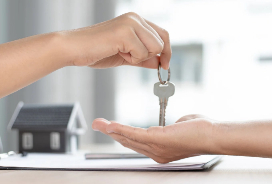The Tax-Free First Home Savings Account (FHSA): A Smart Way to Save for Your First Home
Introduced by the federal government in 2023, this account allows first-time homebuyers to save up to $8,000 per year, tax-free, with a maximum lifetime contribution of $40,000. The funds can be used towards the purchase of a home, providing a helpful boost towards your down payment and closing costs.

What sets this account apart from other savings options? Here are a few key benefits:
Tax-Free Savings
The FHSA allows you to save for your first home without paying tax on the interest earned. This means your savings can grow faster than in a regular savings account, since you're not losing a portion of your returns to taxes. Plus, since you're saving after-tax dollars, you won't owe any tax when you withdraw the funds for your home purchase.
Flexible Contribution Options
You can contribute up to $8,000 per year to your FHSA, but you're not required to make contributions every year. This provides flexibility if your financial situation changes or if you need to take a break from saving. Plus, if you don't use all of your contribution room in a given year, you can carry it forward to future years.
No Withdrawal Restrictions
Unlike other savings options, such as Registered Retirement Savings Plans (RRSPs) or Tax-Free Savings Accounts (TFSAs), there are no restrictions on when you can withdraw funds from your Tax-Free First Home Savings Account. You can use the funds for your home purchase as soon as you're ready, without worrying about penalties or restrictions.
Contribute for Another Person
FHSA account holders must be 18+, but other people (e.g. parents or grandparents) can add funds to the account, subject to the limits already mentioned. The account holder owns the tax credit (not the contributor) and can use that whenever they choose e.g. in the year when they have a big tax bill due to high income.
Transfer Funds from your RRSP
Under the Home-Buyers Plan (HBP, another federally-regulated home savings scheme), a borrower can withdraw up to $35,000 from their RRSP without a tax liability, providing it’s used in the purchase of a home. The $35,000 has to be paid back over the next 18 years.
However, if your balance on the RRSP is > $35,000 you can transfer the excess (up to $8,000) to your FHSA. There’s no tax benefit to this (that was already claimed when you contributed to the RRSP), but it’s a useful way to start (or top up) your FHSA and release RRSP funds without paying tax on the transferred amount.
Two Accounts for One Home?
Yes, if 2 people are buying a home for the first time, they can each use their FHSA! So, if there are 2 (or even more of you), open those accounts now. Time to get started!
Qualifying Home Criteria
To use the funds in your Tax-Free First Home Savings Account towards a home purchase, the home must meet certain criteria. The home must be located in Canada, and it must be a qualifying home – this includes a single-family home, semi-detached home, townhouse, condominium, or mobile home. Additionally, you must intend to live in the home as your principal residence within one year of purchasing it.
Summary
If you're a first-time homebuyer looking to save for your dream home, the Tax-Free First Home Savings Account can be a smart option. With the benefits mentioned above, it's a valuable tool to help you reach your homeownership goals.
Several financial institutions have FHSA accounts available, but contact me if you wish to find out more before deciding which institution to use.